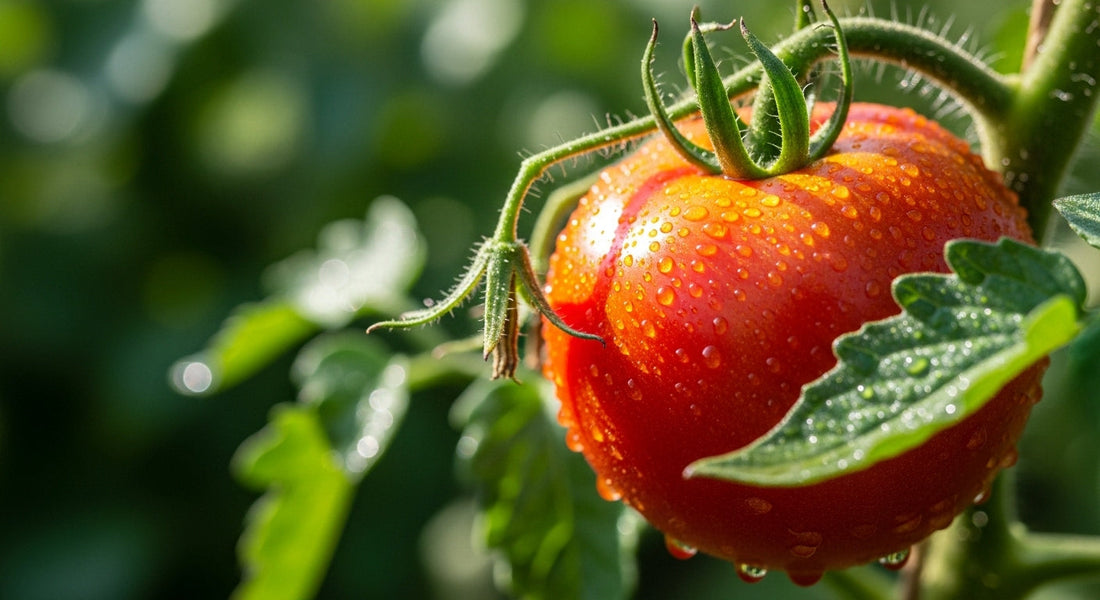
A Beginner's Guide to Growing Amazing Tomatoes in Your Backyard
Share

There are few garden experiences more rewarding than tasting your first sun-ripened, homegrown tomato. The flavor is a world away from the bland, pale versions you find at the supermarket. It's a burst of summer—sweet, acidic, and complex. Tomatoes are the most popular home garden vegetable for a reason: they are incredibly productive and offer a tangible, delicious reward for your efforts, making them the perfect crop for beginners to learn how to grow tomatoes.
Determinate vs. Indeterminate: Choosing the Right Type
Before you plant, you need to know what kind of tomato you're growing. Their growth habits are very different.
-
Determinate (Bush) Tomatoes: These plants grow to a predetermined, compact "bush" size (usually 3-4 feet tall). They set all of their fruit at once over a short period of a few weeks and then are done for the season.
-
Best For: These are the best tomatoes for beginners who are growing tomatoes in containers or have limited space. They are also ideal for gardeners who want a large harvest at one time for canning or making sauce.
-
-
Indeterminate (Vining) Tomatoes: These plants grow as long vines that can reach 6-10 feet or more. They will continue to grow and produce fruit all season long until the first frost.
-
Best For: Gardeners with more space and a sturdy staking or caging system. They are perfect if you want a steady supply of fresh tomatoes for slicing and salads throughout the summer.
-
Planting for Success
Proper planting is the key to a strong, healthy plant.
-
Full Sun and Well-Draining Soil: Tomatoes are sun-worshippers. They need a location that gets at least 6-8 hours of direct, "full sun" per day. They also require rich, well-draining soil. If planting in the ground, amend your soil with plenty of compost.
-
The Deep Planting Method: This is the number one secret to a strong tomato plant. Tomatoes have the unique ability to grow roots all along their stems. When you have your seedling, pinch off the lowest sets of leaves. Then, either dig a deep hole or a shallow trench and plant the seedling so that only the top few sets of leaves are above the ground. This encourages a massive, deep root system, which makes the plant more drought-resistant and stable.
-
Initial Fertilizing: When you plant, add a handful of a balanced, organic fertilizer or bone meal into the hole to give your plant a strong start.
Ongoing Care: Staking, Watering, and Feeding
Once your tomatoes are in the ground, your tomato plant care routine is all about consistency.
-
Support Your Plants: Indeterminate tomatoes absolutely require support. A sturdy tomato cage, a tall stake, or a trellis system will keep the plant off the ground, which improves air circulation (preventing disease) and keeps the fruit clean.
-
Water Consistently: This is crucial. Water your plants deeply at the base, avoiding the leaves, once or twice a week. Inconsistent watering (letting the plant get very dry and then very wet) is the primary cause of problems like blossom-end rot and cracking fruit. A layer of mulch around the base of the plant can help retain soil moisture.
-
Deal with Pests: The most common tomato pest is the large, green hornworm. They can decimate a plant overnight. The best defense is to simply pick them off by hand when you see them and dispose of them.
Conclusion: Harvesting and Enjoying Your Crop
Start harvesting your tomatoes when they are fully colored and have a slight give when gently squeezed. A homegrown tomato, picked at the peak of ripeness and still warm from the sun, is the taste of summer itself. By following these simple steps, you can ensure a bountiful and delicious crop that will make all your efforts worthwhile.
